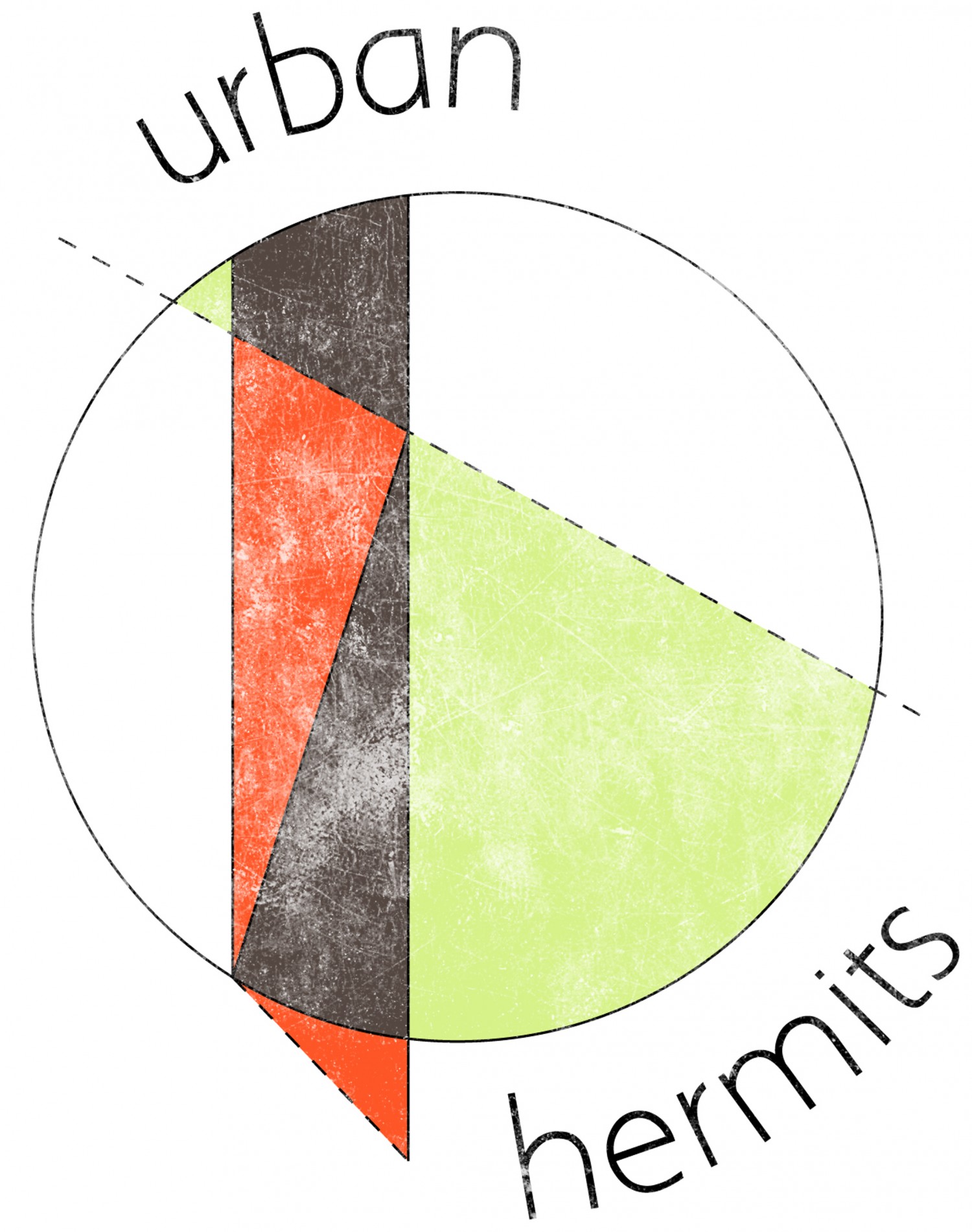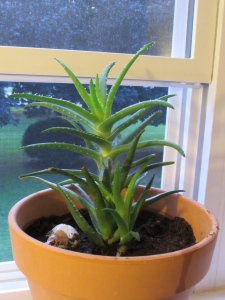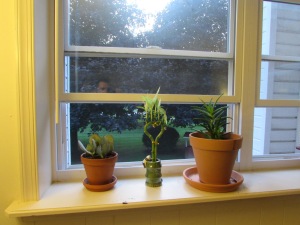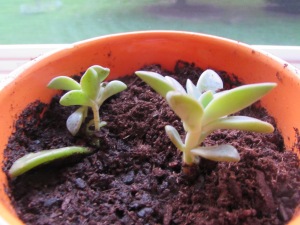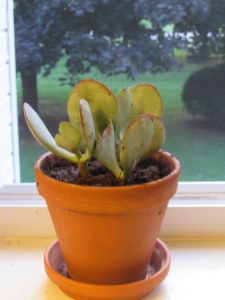 Hi all,
Hi all,
Hope everyone is enjoying the summer! Things are quiet out here in State College, Pennsylvania, and when I am alone in my apartment things can get well…a little lonely! Although I enjoy spending time with my good friend, Django (meet him here!), I also take enjoyment in my houseplants. Houseplants are a great way to lively up your indoor environment year round. Not only that, but plants absorb air pollutants! This is particulalary useful in new buildings where the fumes from construction may be trapped in tight. Consider using house plants in your new (or old) home or workplace to keep yourself feeling fresh and eliminate unpleasant fumes for you and yours.
You might be asking what sorts of plants do well inside. After all, the indoors usually does not provide an ideal environment for most plants. The best place to start is know your indoor environment. I face the Northwest, a direction that is poor for direct sun exposure. Therefore, I avoid plants that require a lot of direct sunlight, such as the jade plant or devil’s ivy. If you have this same problem, consider plants that thrive in shade, such as Chinese evergreen or various palms and ferns (note: not all palms and ferns do well in low light, but many do). Note that many indoor plants are either from tropical and arid regions that maintain consistent temperatures throughout the year (like your home more or less should).
The Aloe vera plant is always a classic that doesn’t need too much direct sunlight, although more than some of the plants named above. It is hardy and can grow for many years and even decades, creating some monster plants! Other environmental factors to consider are humidity, temperature inside (such as if your home has problems with drafts in the winter), etc. Remember, no plant is meant to be indoors, but some can do very well and can really add a lot to where you lay your head. House plants are also generally low maintenance and do not need to be repotted regularly unless the roots are outgrowing the pot, in which it is time to upgrade to a larger pot. Do not top off soil if it is getting low, which results from decomposing and absorption of the soil. Topping off soil can bury the roots too far below the surface, causing the plant to struggle for oxygen. If the soil level drops significantly, just repot the plant with fresh new potting soil. In terms of water, pruning, and other care, seek out information on your specific plant.
Below are photos of a few of my own plants. Happy potting!
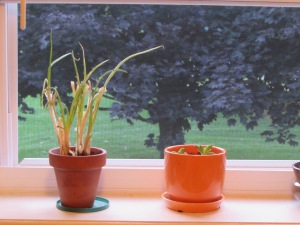
My roommate planted the remnants of his green onions on the left. Try this to grow yourself some new ones!
Source: Michigan State University Extension Master Gardner Manual. For more information about MSU Extension’s Master Gardener Program, visit: http://mg.msue.msu.edu
